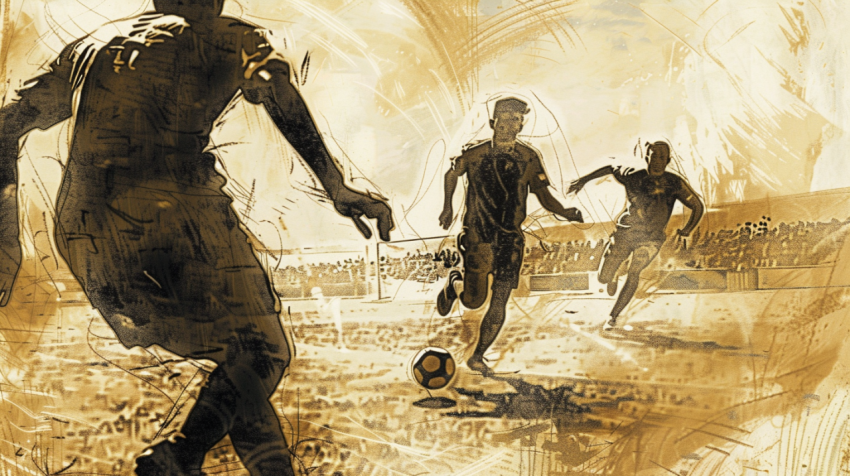











The Ultimate Guide to NFL Football: Everything You Need to Know
Football is more than just a sport; it's a cultural phenomenon. In the United States, the National Football League (NFL) reigns supreme as the most popular professional sports league. This guide will delve into the intricate world of NFL football, covering its history, rules, teams, players, and the sheer excitement that makes it a national obsession.
A Brief History of the NFL
The NFL's roots can be traced back to 1920, when it was founded as the American Professional Football Association (APFA). In 1922, it was renamed the National Football League. Over the decades, the league has evolved, merged with competitors, and grown into a multi-billion dollar industry. Key milestones include:
- The Early Years (1920s-1930s): The league struggled for stability and popularity.
- The Rise of Television (1950s-1960s): Television broadcasts brought the game to a wider audience, leading to increased popularity.
- The AFL-NFL Merger (1970): The merger with the American Football League created a single, dominant league.
- The Modern Era (1970s-Present): The NFL has become a global brand, with the Super Bowl becoming one of the most-watched sporting events worldwide.
Understanding the Game
Football is a complex game with a unique set of rules. Here's a basic overview:
- Objective: The objective is to score more points than the opposing team by advancing the ball into their end zone.
- Gameplay: The game is divided into four 15-minute quarters. Teams alternate between offense and defense, attempting to advance the ball down the field.
- Scoring:
- Touchdown (6 points): A player carries the ball into the opponent's end zone or catches a pass in the end zone.
- Extra Point (1 or 2 points): After a touchdown, a team can attempt a kick for 1 point or a play from scrimmage for 2 points.
- Field Goal (3 points): A team can attempt to kick the ball through the uprights from the field.
- Safety (2 points): The defense tackles an offensive player in their own end zone.
- Key Positions:
- Quarterback: The leader of the offense, responsible for passing and running the ball.
- Running Back: Primarily responsible for running the ball.
- Wide Receiver: Primarily responsible for catching passes.
- Offensive Linemen: Protect the quarterback and create running lanes.
- Defensive Linemen: Try to stop the run and pressure the quarterback.
- Linebackers: Play behind the defensive line and are responsible for both stopping the run and covering passes.
- Defensive Backs: Cover wide receivers and prevent long passes.
The NFL's Structure
The NFL is divided into two conferences: the American Football Conference (AFC) and the National Football Conference (NFC). Each conference has four divisions: North, South, East, and West.
- AFC: 16 teams
- NFC: 16 teams
The Regular Season
The NFL regular season typically runs from September to December. Each team plays 17 games, facing opponents within their division, conference, and the other conference.
The Playoffs
The top seven teams from each conference (four division winners and three wild card teams) advance to the playoffs. The playoffs are a single-elimination tournament that culminates in the Super Bowl.
The Super Bowl
The Super Bowl is the championship game of the NFL, pitting the AFC champion against the NFC champion. It's not just a sporting event; it's a cultural spectacle, featuring elaborate halftime shows and attracting a massive global audience.
NFL Draft The NFL draft is the main source of player recruitment for NFL teams and is the most watched NFL off-season event. The draft takes place every year and features college players who have declared themselves eligible for the draft.
Key Figures in NFL History
Many legendary figures have shaped the NFL. Some of the most notable include:
- Coaches: Vince Lombardi, Bill Belichick, Don Shula, Bill Walsh, Tom Landry.
- Quarterbacks: Tom Brady, Joe Montana, Peyton Manning, John Elway, Dan Marino.
- Running Backs: Jim Brown, Walter Payton, Barry Sanders, Emmitt Smith, LaDainian Tomlinson.
- Wide Receivers: Jerry Rice, Randy Moss, Larry Fitzgerald, Steve Largent, Calvin Johnson.
- Defensive Players: Lawrence Taylor, Reggie White, Dick Butkus, Deion Sanders, Ronnie Lott.
- Jim Thorpe: One of the first great players in the NFL.
The NFL Today
The NFL continues to evolve, adapting to new technologies and societal changes. Key trends include:
- The Rise of Analytics: Teams are increasingly using data and analytics to gain a competitive edge.
- Player Safety: The league has implemented rule changes and initiatives to improve player safety.
- International Expansion: The NFL is actively exploring opportunities to expand its global reach.
Conclusion The National Football League remains a global sport, capturing the hearts and minds of fans worldwide. It is a complex but thrilling competition that blends athleticism, strategy, and teamwork. From its humble beginnings to its current status as a multi-billion dollar business, football has become the most popular sport in the United States.
NFL, football, Super Bowl, NFL scores, NFL standings, NFL news, NFL schedule, NFL teams, NFL players, NFL playoffs, NFL draft, American football, quarterback, touchdown, field goal, fantasy football, NFL rumors, NFL history, NFL game, NFL live

